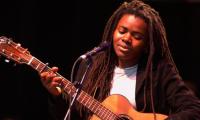It is springtime in the Middle East once again. It would be fair to say that I haven’t witnessed such glorious, reinvigorating weather in my long years of living and working in the region.
This year appears to be truly special. Temperatures have dropped to single digits in many parts of the region – it even snowed for a bit in some parts of the Levant. With a pleasant, cold snap in the air – it touched nearly zero in some parts of the Gulf this February – everyone seems to have brought out their woolens and leathers that are rarely found to be of any use in our part of the world. These days when I go for my daily stroll along the Sharjah Corniche, I am forced to carry my leather jacket with me.
This is perhaps the best time to be in the region right now. And coming from a warm region, the colder it is the better for me. I just can’t seem to have enough of this magical, absolutely rejuvenating weather, forever talking about it with anyone who cares to listen. The air is incredibly sweet and pure. And to live it and breathe in it all seems like the greatest blessing nature could offer you. I am not very good at dealing with overt religiosity. But right now, I feel like bowing my head in total submission and gratitude. Alhamdulillah for all His precious gifts.
But not everyone appears to enjoy nature in its full glory and breathtaking splendour. Some can still manage to come up with enough excuses to grumble and whine about the ways of the world in general and the weather in particular. They huff and puff and sniffle as they complain of cold weather conditions, fog and even the divine breeze flowing from up north and from across the Gulf. They almost seem to long for the humid and oppressive weather conditions of an Arabian summer as they go on and on about the wretched flu and all sorts of allergies and diseases that the Arab spring conspires to bring them every year.
I feel nothing but pity for these unhappy souls. Do they even realise what they are missing? Okay, it is a bit chilly perhaps for the thin-skinned and overly sensitive. But it is not cold-cold – as in a depressing English or European winter, with the regulation overcast, gloomy skies. These low temperatures in the Middle East often go with warm and bright sunshine.
This morning when I stood outside my office overlooking the creek, the burst of dazzling sunlight nearly took my breath away. It was another clear and bright day, with a light breeze caressing those fortunate enough to be up and about, instead of being chained to their desks.
Sharjah’s Khalid Lagoon has turned nearly white amid a feeding frenzy of thousands of seagulls and other migratory birds that traverse the distance of thousands of miles to be here this time of the year. I desperately wished that I had my camera with me – though I have tried to capture this incredible scene before in my own clumsy ways. I watch it all the time from my office window in the Buhaira Corniche, mesmerised by its spectacular, awe-inspiring beauty. Maybe this is what Keats had in mind when he wrote that “a thing of beauty is a joy forever”.
Every time I need a break or simply get bored, I step out of my office and try to drink in the breathtaking beauty of the view and the whole of Buhaira Corniche. The pearl-shaped lake that joins the Sharjah Creek with the warm waters of the Gulf is encircled on all sides by an emerald green landscape and by tall trees that seem to defy the high-rises all around.
Birds are everywhere, from the ubiquitous seagulls and kingfishers to crows even, perpetually playing, chirping, twittering and feeding. Even the pigeons and doves are there, side by side, happily chipping away at grains or whatever they could spot. Growing up, I was particularly crazy about pigeons. I used to have dozens of them at home. My father, may he rest in peace, liked them too but would get very upset whenever the neighbourhood cat made a meal of one of them. He would threaten to throw me out with my pigeons.
There is something about the winged creatures, especially pigeons with all their enchanting chatter, fun and games that could bring even the sleepiest and most deserted of places alive. This is my favourite spot in the whole of the UAE.
Who would have ever thought that you could create such a miracle in the heart of the desert? But then Sharjah, Dubai and, to a great extent, the UAE defy all received notions about the Gulf and the Middle East. While green landscaping, done at a formidable cost, is a common feature and encouraged all across the Emirates, Sharjah stands out for its endless greenery and great public parks, not to mention the open grand vistas and magnificent mosques and monuments.
The Emirate is not just home to more than 600 mosques; it is also known for its rich museums, art galleries, world-class universities, libraries and cultural events held throughout the year. No wonder Unesco has named Sharjah the “cultural capital of the Arab world”. Interestingly, this preoccupation with art, culture, knowledge and the good things of life goes with a quest for material progress. Nearly half of the UAE’s manufacturing sector is based in Sharjah.
More importantly, Sharjah has resisted the reckless, blind development and growth that came with the dawn of the oil era in most Gulf countries. In its quest for balanced growth, it has remained faithful to its Islamic identity and Arab traditions, even as it has actively encouraged the pursuit of knowledge, art and culture. Perhaps, it is because Sharjah’s benevolent ruler Dr Sheikh Sultan Al-Qasimi is himself an accomplished poet, historian and boasts two PhDs.
Perhaps it is a stretch, but I find in contemporary Sharjah – and the UAE to some extent – the echoes of the eighth-century Baghdad under the legendary Abbasid caliph Harun al-Rashid – the land of a thousand-and-one tales, the land of Scheherazade.
Those were the times when the Arab and Islamic civilisation had been at its peak and Baghdad had been the greatest city on earth. The city was not just the capital of the most powerful and richest empire of the time, but also a great centre of scientific learning and knowledge, and home to Dar al-Hikmah, the House of Wisdom founded by Caliph Harun al-Rashid that functioned as a research centre and library, in addition to translating the best and brightest minds from around the world, including those from ancient Greece and India, into Arabic.
That treasure trove of learning played a critical role in both the Islamic Golden Age and the European Renaissance. Whatever happened to that craving for knowledge that once drove the Arabs and Muslims to far corners of the world? There are lessons to be drawn from Baghdad’s past and Sharjah’s present.
The writer is an independent writer and former editor.
Email: Aijaz.syed@hotmail.com
Twitter: @AijazZaka
Administration’s approach is far more nuanced, incorporating adjustments for non-tariff barriers, currency...
With this unprecedented buildup, Diego Garcia has transformed into ticking time bomb of apocalyptic power
Pakistan is among world’s most climate-vulnerable nations, despite contributing minimally to global emissions
Essentially, Dr was psychiatrist, but he was also social activist and crusader for progressive social change
Pakistan can't afford another status quo budget so it must be budget of imagination, risk-taking and system-level...
Driven by flawed logic, his administration has imposed tariffs designed to artificially rebalance trade







